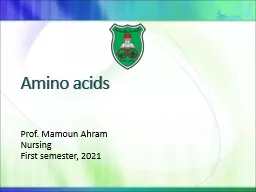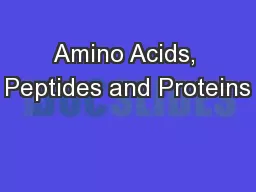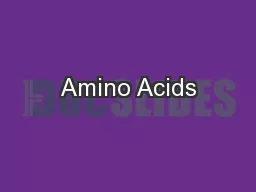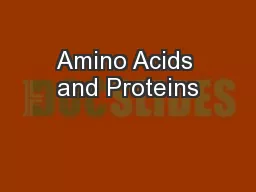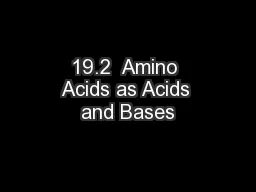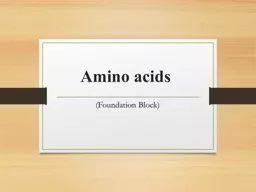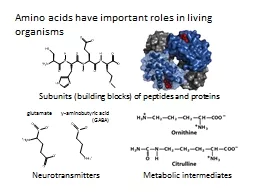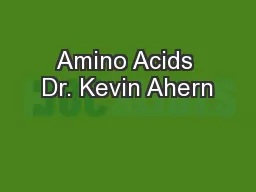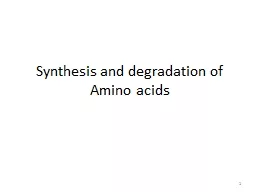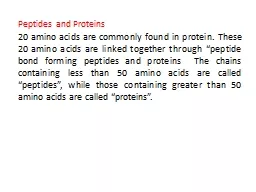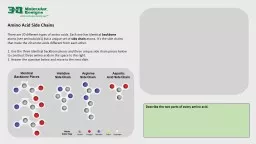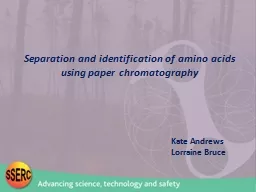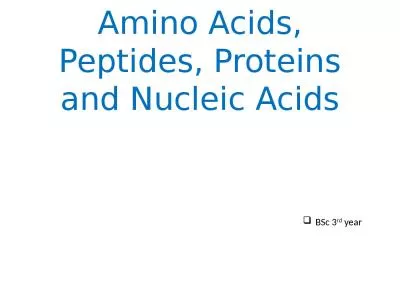PPT-Amino acids Prof. Mamoun Ahram
Author : lauren | Published Date : 2022-02-10
Nursing First semester 2021 General structure Proteins are polymers of αamino acids or amino acids An amino acid consists of a central carbon atom called the
Presentation Embed Code
Download Presentation
Download Presentation The PPT/PDF document "Amino acids Prof. Mamoun Ahram" is the property of its rightful owner. Permission is granted to download and print the materials on this website for personal, non-commercial use only, and to display it on your personal computer provided you do not modify the materials and that you retain all copyright notices contained in the materials. By downloading content from our website, you accept the terms of this agreement.
Amino acids Prof. Mamoun Ahram: Transcript
Download Rules Of Document
"Amino acids Prof. Mamoun Ahram"The content belongs to its owner. You may download and print it for personal use, without modification, and keep all copyright notices. By downloading, you agree to these terms.
Related Documents

